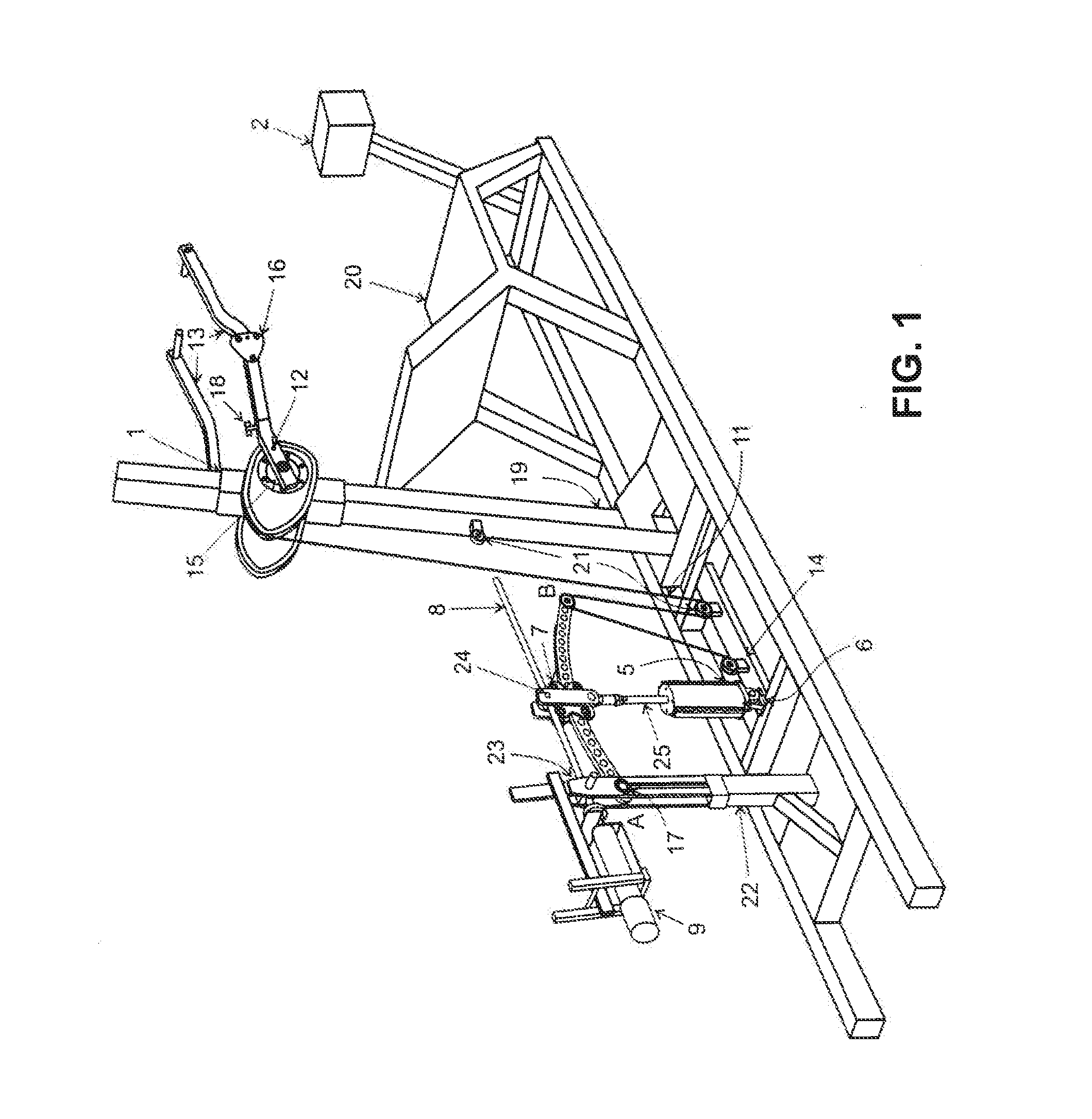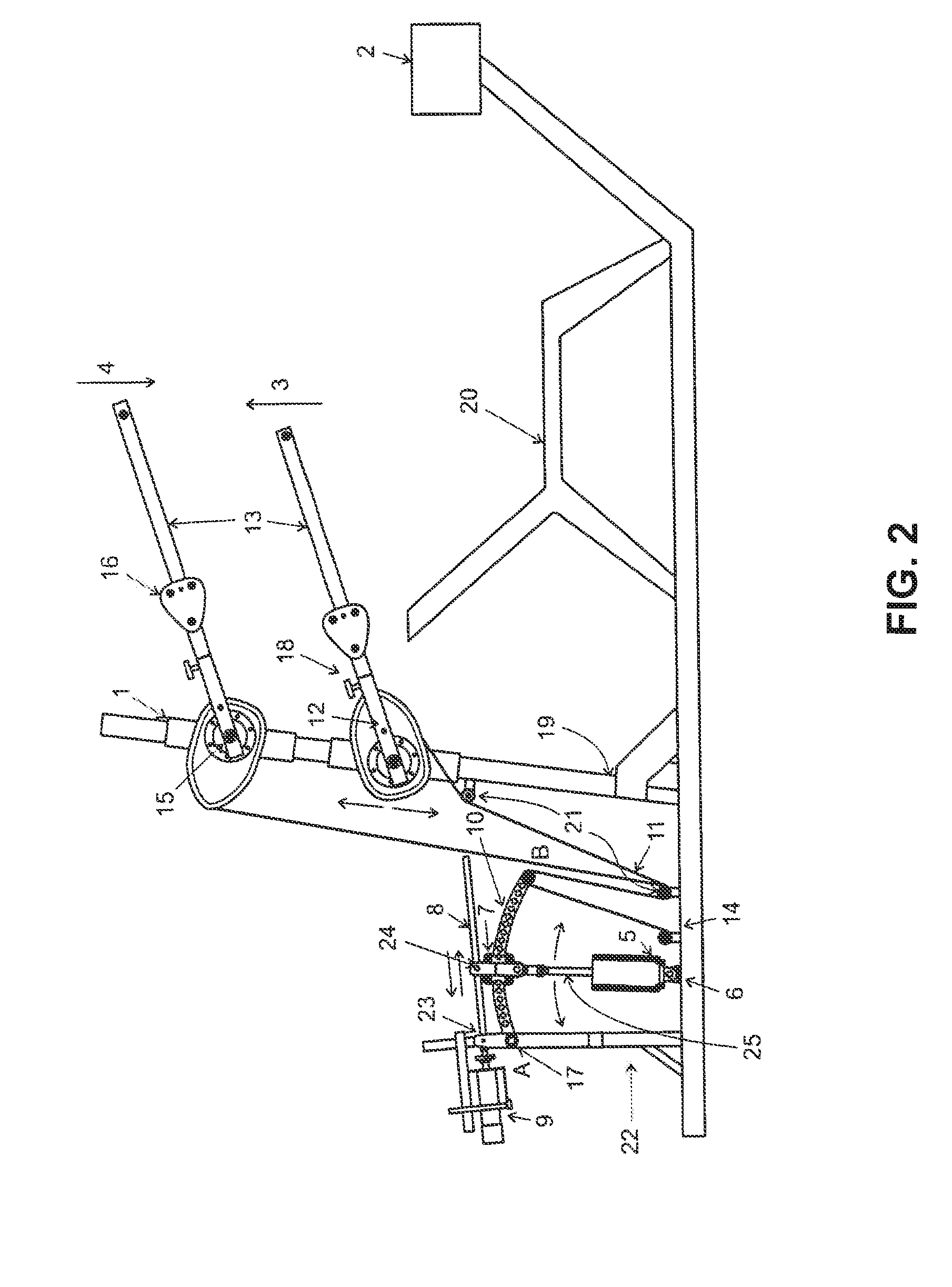Resisting system for making variable mechanical resistance exercises
a mechanical resistance and resistance system technology, applied in the field of resistance systems for making variable mechanical resistance exercises, can solve the problems of user exhaustion, exercise apparatuses that do not allow the user to preform, and no exercise apparatuses known which allow the user to use a variety of commands using brain and/or brain waves, so as to improve the accuracy and precision of mechanical resistance (weight) and increase the amount of exercises. , the effect of improving performance results
- Summary
- Abstract
- Description
- Claims
- Application Information
AI Technical Summary
Benefits of technology
Problems solved by technology
Method used
Image
Examples
Embodiment Construction
[0047]In a preferred embodiment of the present invention, a mechanical resisting system (weight), consisting of a pneumatic piston, (5) is provided. This piston pivots in its base (6), and the end of its piston rod is connected to a carriage (7) which in turn is connected to a guide screw (8), which is connected to a motor (9), which causes the carriage (7) travel along a cam arm (10) having a pivot point (17). At its free end (B), the cam arm (10) is connected, by a traction element (cable) (11) to the irregular pulley (12), which, in turn, is attached to the arms of the machine (13), and both (arm and pulley) rotate about the axis (15). When moving away the carriage (7) from cam arm pivot (A), “the lever arm” becomes smaller, offering more resistance (weight) to the user and vice versa.
[0048]In order to move the carriage (1) which encloses the irregular pulley (12) and arms (13) along the column (19), a system with a retractable cartridge with clutch (14) was designed, it allows f...
PUM
 Login to View More
Login to View More Abstract
Description
Claims
Application Information
 Login to View More
Login to View More - R&D
- Intellectual Property
- Life Sciences
- Materials
- Tech Scout
- Unparalleled Data Quality
- Higher Quality Content
- 60% Fewer Hallucinations
Browse by: Latest US Patents, China's latest patents, Technical Efficacy Thesaurus, Application Domain, Technology Topic, Popular Technical Reports.
© 2025 PatSnap. All rights reserved.Legal|Privacy policy|Modern Slavery Act Transparency Statement|Sitemap|About US| Contact US: help@patsnap.com



